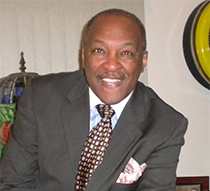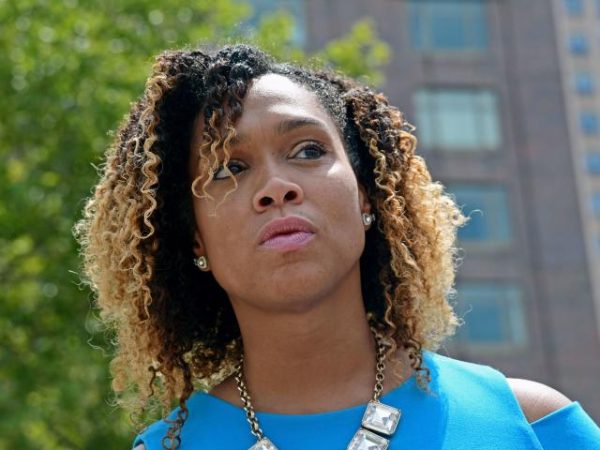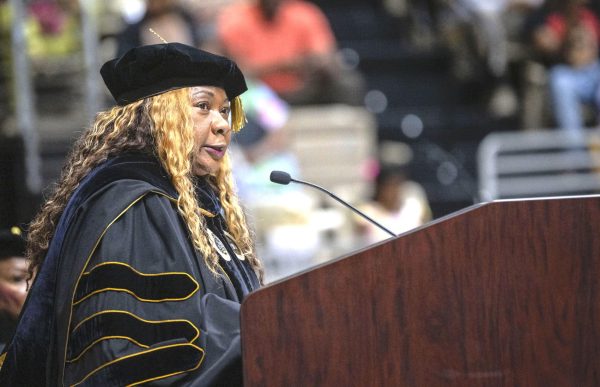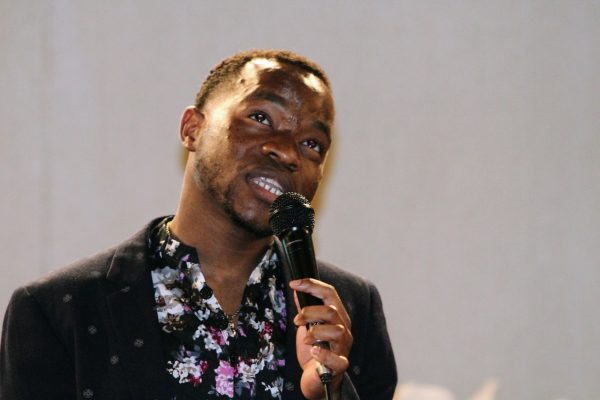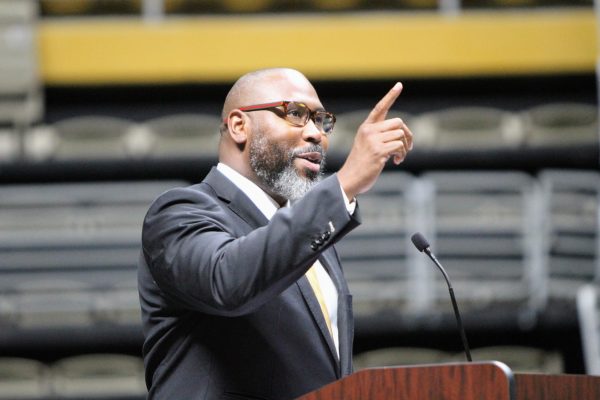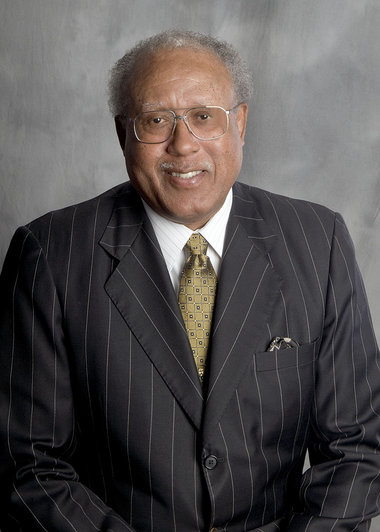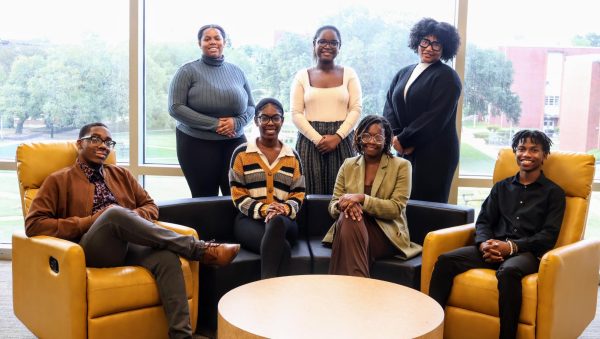Students react to Ivey’s decision to use COVID-19 funds to build prisons
Gov. Kay Ivey gives the State of the State Address to a joint session of the Alabama Legislature on Feb. 4, 2020, in the old house chamber of the Alabama State Capitol in Montgomery, Ala. Vasha Hunt – AP
October 16, 2021
Alabama lawmakers approved a plan made by Alabama Gov. Kay Ivey to use $400 million from COVID-19 relief funds to build two mega prisons on Sept. 29. Many have criticized her plan, including students here at Alabama State University.
Ivey has been adamant about fixing the state’s prisons, stating their issues were a driving force in her decision to use the funds to rebuild them. She claimed that the prison facilities are aging and that they are understaffed and overcrowded. These claims do coincide with last year’s allegations from the U.S. Department of Justice that filed suit against the state of Alabama because violence in the prisons violated the constitutional rights the inmates have for a safe environment.
The Republican governor continued to defend her decision saying, “Addressing our decadeslong prison infrastructure challenges is not easy, but sometimes, doing the right thing and the hard thing are one and the same.”
The plan that Ivey suggested will include two phases involving the construction, renovation, and closing of prisons. Phase one consists of building two 4,000-bed male prisons in the Elmore and Escambia counties. These two prisons will specialize in mental health care and substance abuse treatment, medical care, and educational and vocational programs. As a result, Elmore, Staton, Kilby, and Hamilton prisons would all be closing.
Phase two begins after the first phase is 60% done. In this phase, a new 1,000-bed prison will be built for the women to replace the Julia Tutwiler Prison in Elmore County. Phase two will also feature renovations to Donaldson, Limestone, and one of the other prisons in the Barbour or Bullock counties.
Students here at ASU were asked about their thoughts on Ivey’s new plan, and many of them were critical of the governor’s distribution of the COVID funds.
Alabama native Chaz Clemons posed a question in response to the plan, “Why take away money to build a prison instead of helping out the school system and the people that need it?” The senior communications major suggested that the money could have gone to the Alabama school systems, especially HBCUs.
Clemons was not alone in his thinking. Carrie Mason, a sophomore dance major from Detroit, Michigan, agreed that the money should have gone to educational institutions “such as our institution, where many students need assistance with paying their bills.”
While the school system was a popular route among students for the money to be distributed, it was not the only one.
Freshman business administration major Amin Buchannan suggested another avenue the money could have been used toward. “With all that money, she could have been putting it toward recreational centers, trying to get people jobs and get them out of poverty.” Coming from Memphis, Tennessee, where nearly half of the homes are single-parent homes, Buchanan expressed the importance of using money to establish some “big brother or sister organizations” to help out the youth.
The consensus from the students was that the $400 million could be used for more positive and underutilized resources. One of the more obvious ones was the reason the money was appropriated, to begin with, the COVID-19 pandemic.
“Think about COVID. People are being kicked out of their houses and they are needing the money,” said Maya Lawrence. The junior rehab services major from St. Louis, Missouri, was adamant about helping the people that have been severely affected by the pandemic, as is the design of the relief funds.
Baltimore native and psychology major Joi Eubanks offered a similar sentiment to Lawrence, stating that “the money could have been put toward people that are hungry, people that are dealing with cancer, and people that have sicknesses and can’t afford medical care.”
With so many students giving their ideas on how this money could be better spent in more positive ways, it brings into question the priorities of Gov. Ivey and the Alabama lawmakers.
Political science major, Laquann Wilson sums this up by saying, “We lock up the most people in the world, but our neighbor (Canada) next door has universal health care.”
Despite the approval of Ivey’s plans, criticism like this does not seem to be slowing down anytime soon.










